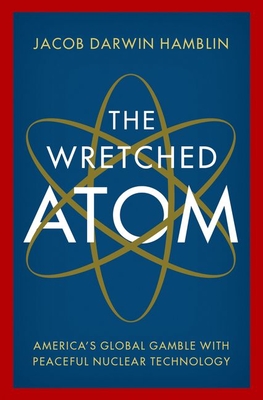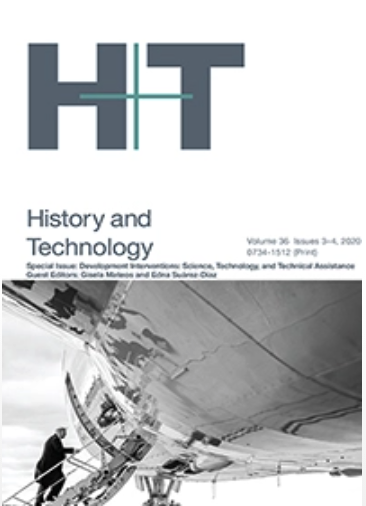 If your New Year’s resolution includes reading more environmental history, you are in luck! A new installment of H-Environment Roundtable Reviews is available! This one focuses on environmental interpretations of iconic events in American history. My introduction is here:
If your New Year’s resolution includes reading more environmental history, you are in luck! A new installment of H-Environment Roundtable Reviews is available! This one focuses on environmental interpretations of iconic events in American history. My introduction is here:
Should environmental historians confine themselves to subjects that clearly have environmental links, such as stories of pollution, natural degradation, conservation, and wilderness protection? If the answer is “no,” perhaps the field of environmental history implies a deeper commitment. Guided by the premise that nature is the essential part of humanity’s experience, shouldn’t environmental scholars have crucial insights on the fundamental episodes of the past?
So asks Mark Fiege in his ambitious book, The Republic of Nature. In what he calls his “quest to find the nature embedded in the iconic moments of American history,” Fiege offers a volume that is rich with reinterpretations. In nine chapters, he paints new pictures of classic topics such as the Salem Witch Trials, the American Revolution, the Cotton South, the life of Abraham Lincoln (“nature’s nobleman”), and the battle of Gettysburg. He treats his readers to a nature-focused discussion of the 1860s transcontinental railroad and the 1970s oil crisis. He proposes an environmental history of racial segregation, and even offers a natural history of the atomic bomb. Throughout, he explores the balance between agency and determinism, and finds that the final limit on the range of human agency, and “the final determinant of human history,” is nature itself.
I invited Conevery Bolton Valencius, an assistant professor of History at University of Massuchusetts-Boston, to contribute to this roundtable because of her outstanding work on early Americans and their relationships with the natural world. Her book The Health of the Country, an exploration of the identification of land with health from the Louisiana Purchase to the Civil War, won the 2003 George Perkins Marsh Award for best book in environmental history. In that book, she explores how the development of differing medical practices and scientific outlooks reinforced regional identities. Her most recent book, The Lost History of the New Madrid Earthquakes, will itself be a subject of a future H-Environment Roundtable.[1]
Another commentator, Roderick Frazier Nash, has written extensively about the idea of wilderness in American history. He was one of the early practitioners of environmental history, and began teaching routinely on the subject at UC Santa Barbara after the 1967 publication of his influential book, Wilderness and the American Mind. Like Fiege, he was then keenly interested in the ways that Americans thought about the natural world, and how those ideas informed their actions, from the earliest settlers to the era of national wilderness legislation.[2]
Eric Foner’s comments in this roundtable were first provided at the annual meeting of the Organization of American Historians in April 2012. A prize-winning historian of the United States, and the DeWitt Clinton Professor of History at Columbia University, Foner has written about many of the subjects in Fiege’s book, including both slavery and Abraham Lincoln. I had seen a video of his OAH presentation on a blog maintained by historian Anne M. Little, and I thought that Foner’s comments would provide an excellent perspective in our roundtable.[3] As it happened, one of our existing roundtable participants bowed out for personal reasons, so I asked Foner if he had a text version of his talk that he would contribute. Fortunately, he did, and he graciously offered to include it here.
Our final commentator, Christopher C. Sellers, a professor of history at SUNY Stony Brook, has explored the social and political dimensions of the rise of environmental consciousness. His book Hazards of the Job reveals how environmental health science came from the field of industrial hygiene, rooted in the experiences of working people and the professionals who set workplace standards. His latest book, Crabgrass Crucible, the subject of a future H-Environment roundtable, goes outside urban areas and locates the roots of environmentalism in the political aims and understandings of the natural world by Americans in the suburbs.[4]
Before turning to the first set of comments, I would like to pause here and thank all the roundtable participants for taking part. In addition, I would like to remind readers that as an open-access forum, H-Environment Roundtable Reviews is available to scholars and non-scholars alike, around the world, free of charge. Please circulate.
The roundtable, along with all the others, can be accessed (for free) at http://www.h-net.org/~environ/roundtables.html
[1] Conevery Bolton Valencius, The Health of the Country: How American Settlers Understood Themselves and Their Land (Basic, 2002); Conevery Bolton Valencius, The Lost History of the New Madrid Earthquakes (Chicago, 2013).
[2] Roderick Frazier Nash, Wilderness and the American Mind (Yale University Press, 1967).
[3] The video (and blog by Anne M. Little) is here: http://www.historiann.com/2012/04/27/mark-fieges-republic-of-nature-at-the-oah-april-20/.
[4] Christopher C. Sellers, Hazards of the Job: From Industrial Disease to Environmental Health Science (University of North Carolina Press, 1999); Christopher C. Sellers, Crabgrass Crucible: Suburban Nature and the Rise of Environmentalism in Twentieth-Century America (University of North Carolina Press, 2012).




Leave a comment